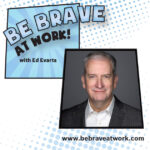
by Ed Evarts | Dec 12, 2019 | Reputation, Visibility and Value
The frequency and pace of change in your organization, the exponential growth of your professional transparency, your lack of energy to connect with others while employed (visibility), and your lack of energy regarding your performance assessment (value), all create...

by Ed Evarts | Dec 5, 2019 | Reputation, Visibility and Value
Another reason networking while employed and performance appraisals are becoming increasingly ineffective is the explosive growth in professional transparency. As recently as seven years ago, unless the subject of your search was your favorite movie star, rock star,...

by Ed Evarts | Jun 4, 2019 | Reputation
Reputations back in the “old days” While the importance of a good reputation is not new, the environment in which you are working to build a good reputation is. Twenty years ago, your reputation as a business professional was confined to the experiences of...

by Ed Evarts | Aug 16, 2018 | Reputation, Visibility and Value
The frequency and pace of change in your organization, the exponential growth of your professional transparency, your lack of energy to connect with others while employed (visibility), and your lack of energy regarding your performance assessment (value), all create...

by Ed Evarts | Aug 14, 2018 | Reputation, Visibility and Value
Even another reason networking while employed and performance appraisals are becoming increasingly ineffective is the explosive growth in professional transparency. As recently as seven years ago, unless the subject of your search was your favorite movie star,...











